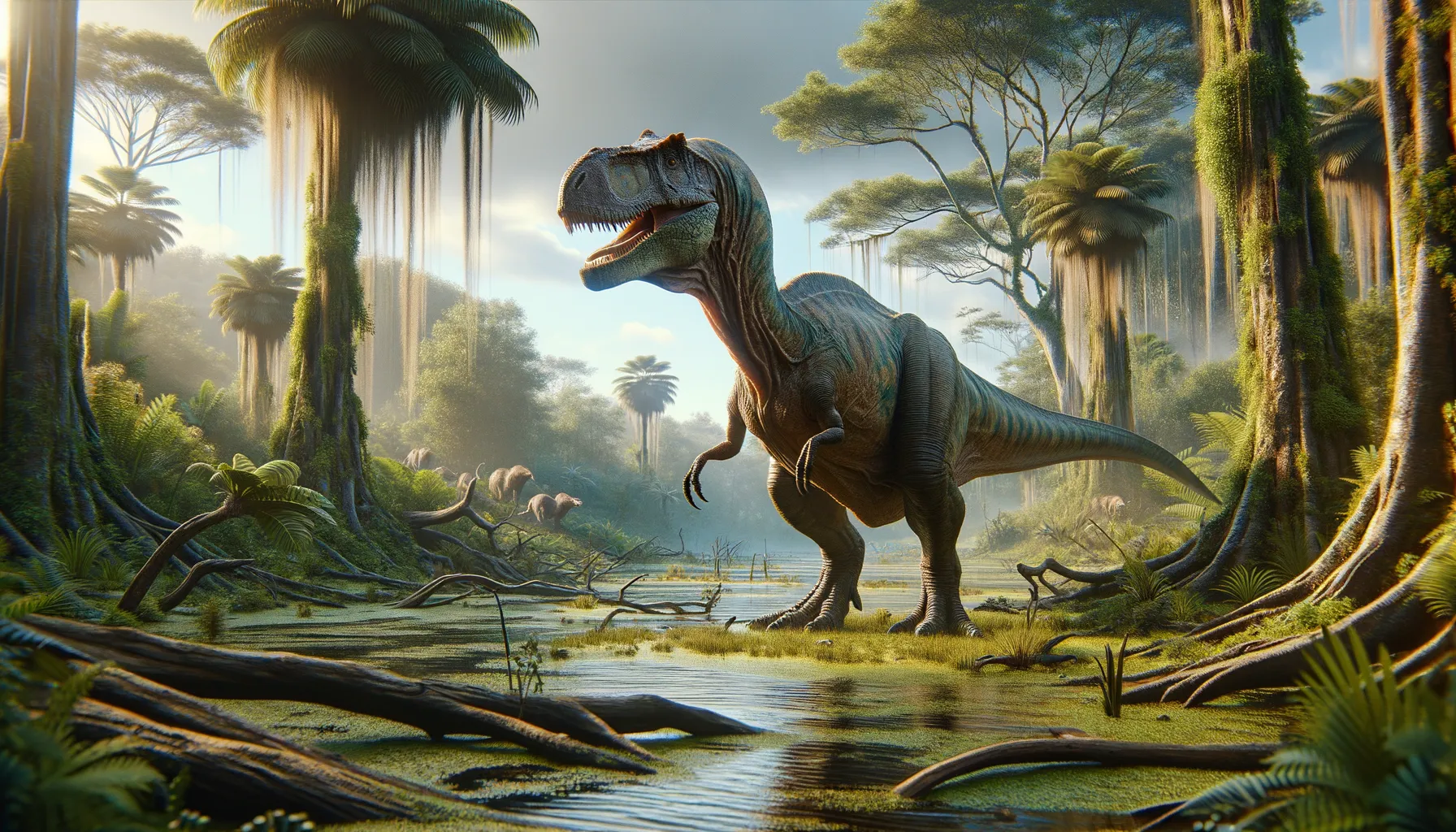
Epachthosaurus
The Argentine giant of the herbivore world!
Period
Cretaceous
Length
Could reach lengths of up to 18 meters.
Height
Stood about 6 meters tall.
Weight
Estimated to weigh around 25,000 kg.
Epachthosaurus was a large sauropod dinosaur that roamed the Earth during the Late Cretaceous period, primarily in what is now Argentina. Known for its massive size, it had a long neck and tail, and a relatively small head, characteristics typical of sauropod dinosaurs. This giant herbivore was part of a diverse ecosystem and likely thrived in floodplain environments where vegetation was abundant. Its discovery added valuable information about sauropods in the Southern Hemisphere.
Diet
Epachthosaurus was a herbivore, feeding primarily on a variety of plants. Its long neck allowed it to reach high vegetation, while it could also graze closer to the ground, making it an efficient forager.
Hunting
As a herbivore, Epachthosaurus did not hunt. Instead, it focused on finding plant material to sustain its massive body, likely spending much of its day feeding to meet its energy needs.
Environmental challenges
Epachthosaurus faced challenges such as habitat changes due to shifting climate patterns in the Cretaceous. It had to adapt to varying food supplies as its environment transformed over time. Predators also posed a threat, although its size provided some defense. Seasonal changes could have affected the availability of plant food, making migration a possible survival strategy.
Speed
Epachthosaurus was likely a slow-moving dinosaur.
Lifespan
It could live up to several decades.
First discovery
First discovered in Argentina in 1993.
Fun Facts
- Epachthosaurus was a large, long-necked dinosaur that lived during the Late Cretaceous period.
- This dinosaur was a herbivore, which means it primarily fed on plants and vegetation.
- Fossils of Epachthosaurus have been found in what is now Argentina, highlighting its presence in South America.
- Epachthosaurus is known for its sturdy vertebrae, which suggests it had a robust build.
- Despite its massive size, like many sauropods, it is believed to have had a relatively small head.
- The name 'Epachthosaurus' means 'heavy lizard', pointing to its substantial body size.
- Epachthosaurus' fossils were first discovered in the 1990s, making it a relatively recent addition to the dinosaur family.
Growth and Development
Like other sauropods, Epachthosaurus likely experienced rapid growth during its early years to reach its giant size. Fossil evidence suggests that it had well-developed bone structures to support massive muscles and a large frame. Growth rings in bones can indicate periods of fast growth, similar to tree rings. Juveniles would have required substantial resources to reach adulthood, requiring stable food sources.
Habitat
Epachthosaurus thrived in floodplain environments with abundant water and vegetation. Such habitats would provide the necessary resources for its large size. It likely lived in semi-arid to tropical climates, with forests and open landscapes providing diverse plant life. Seasonal rainfall patterns may have influenced its movements within its home range.
Interaction with other species
Epachthosaurus likely lived alongside a variety of other dinosaur species, both herbivores and carnivores. Its massive size would have deterred most predators, although juveniles were more vulnerable. Social behavior among its species is not well-documented, but like other sauropods, they may have formed herds for protection. Competition for resources with other large herbivores could have influenced its feeding and migratory behaviors.
Natural lifespan
Epachthosaurus had a natural lifespan of several decades.
Reproduction
Epachthosaurus likely laid eggs, as is common among sauropods, with nests built on the ground. Evidence suggests it could have laid multiple eggs at a time, relying on quantity over parental care for survival. The reproductive strategy would involve finding safe nesting sites to protect against predators and environmental threats. Juveniles would need to fend for themselves soon after hatching.
Social behaviour
Epachthosaurus may have lived in groups, though concrete evidence is sparse. Social structures, if present, could have provided protection against predators. Herd behavior might have facilitated finding and accessing food resources more efficiently. Communication among individuals could include vocalizations or physical displays, common in large animal groups.
Fossil locations
Fossils of Epachthosaurus were primarily found in Patagonia, Argentina. The discovery in South America added valuable insight into the distribution of sauropods in the Cretaceous period. The fossil sites provided well-preserved bones that helped reconstruct its physical appearance and understand its environment. These findings also helped clarify the biodiversity and paleoecology of the region during its time.
